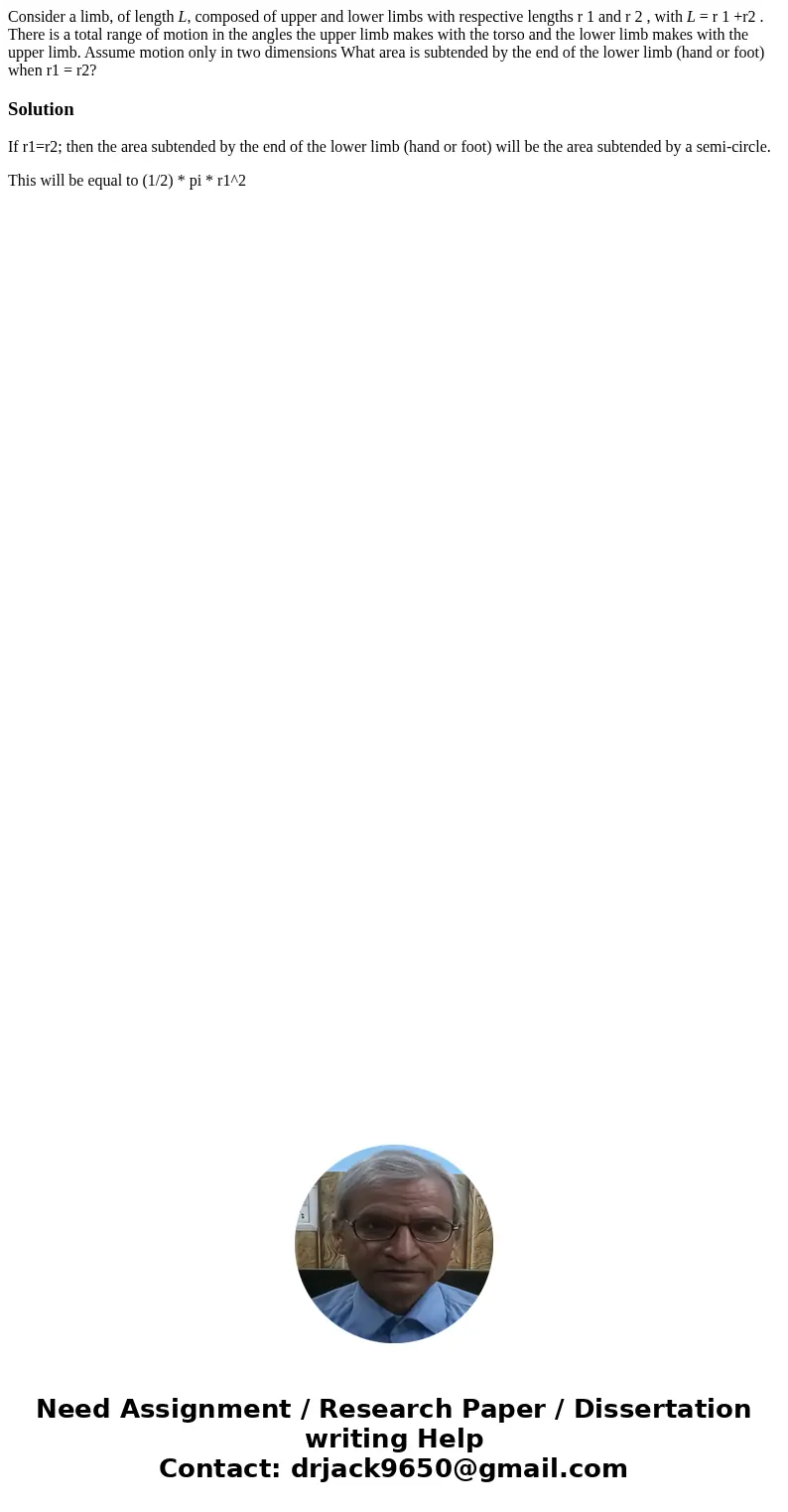Consider a limb of length L composed of upper and lower limb
Consider a limb, of length L, composed of upper and lower limbs with respective lengths r 1 and r 2 , with L = r 1 +r2 . There is a total range of motion in the angles the upper limb makes with the torso and the lower limb makes with the upper limb. Assume motion only in two dimensions What area is subtended by the end of the lower limb (hand or foot) when r1 = r2?
Solution
If r1=r2; then the area subtended by the end of the lower limb (hand or foot) will be the area subtended by a semi-circle.
This will be equal to (1/2) * pi * r1^2

 Homework Sourse
Homework Sourse